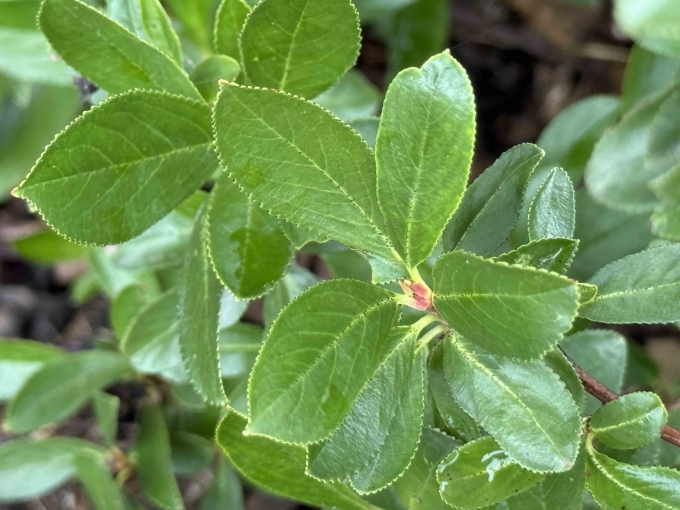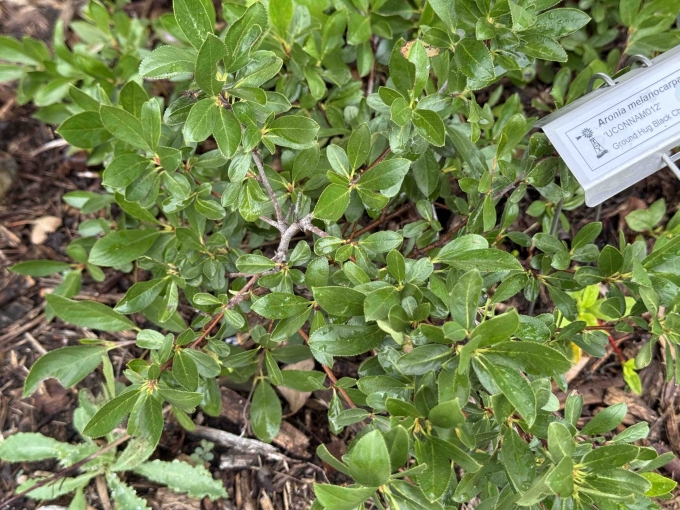Common Name: Black Chokeberry
Family: Rosaceae
Plant Type: Deciduous Shrub (Dwarf Ground Cover Form)
Hardiness Zones: 3–8
Height: 0.75 to 1.0 feet
Spread: 2.0 to 3.0 feet
Bloom Time: May
Bloom Description: Clusters of small, white, five-petaled flowers
Sun Exposure: Full sun to part shade
Water Needs: Medium
Soil Preference: Well-drained to moist soils, tolerates a wide range
Management Level: Low
Suggested Use: Ground cover, slopes, embankments, pollinator and bird gardens
Attracts: Birds, pollinators
Tolerates: Erosion, occasional wet soil
Notable Features: Edible fruit, vibrant fall foliage, compact form
Nebraska Growing Notes:
‘Ground Hug’ black chokeberry is a hardy, low-growing native cultivar well-suited to Nebraska’s climate and a range of soil conditions. Its compact, spreading form makes it a valuable alternative to taller shrubs in both ornamental and ecological plantings. The plant is especially useful for stabilizing slopes, filling gaps in borders, and adding seasonal interest to rain gardens or pollinator beds.
In spring, it produces clusters of white flowers followed by small, blue-black berries that attract birds. Its glossy green foliage turns brilliant shades of red and orange in the fall, offering multi-season interest. It performs best in full sun but tolerates part shade and adapts well to both moist and moderately dry sites.
Landscape Use:
Ideal for massing as a ground cover in small-scale landscapes, wildlife gardens, or sustainable design projects. Its ability to withstand variable soil moisture, resist erosion, and support wildlife makes it an excellent choice for Nebraska rain gardens, bioswales, and habitat-friendly designs.
Caution:
Though this cultivar does not spread aggressively, it may slowly expand via root suckers. Pruning may be done to maintain form or limit spread. Fruits are edible but astringent—more palatable when processed into jams or jellies.
Garden Locations:
Bed(s) 3, 4, 10


